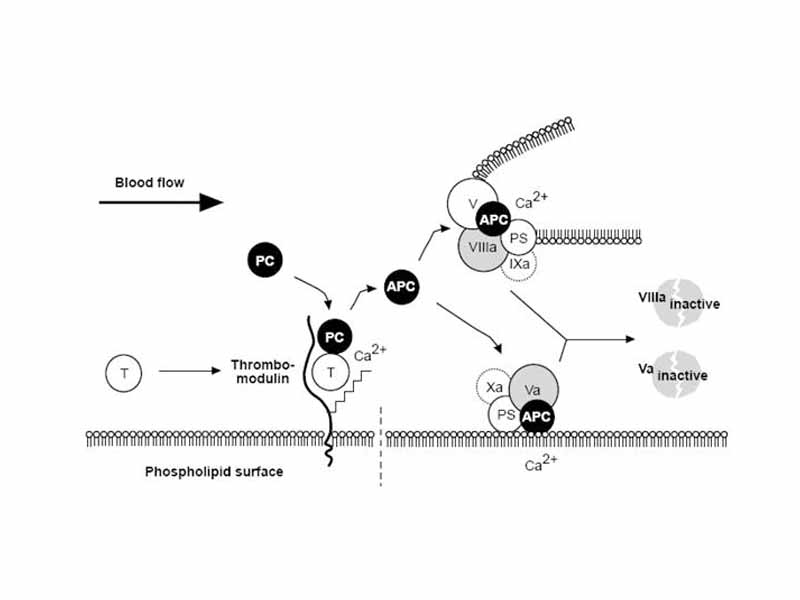The Protein C Anticoagulant Pathway: Thrombin escaping from a site of vascular injury binds to its receptor thrombomodulin (TM) on the intact cell surface. As a result, thrombin loses its procoagulant properties and instead becomes a potent activator of protein C. Activated protein C (APC) functions as a circulating anticoagulant, which specifically degrades and inactivates the phospholipid-bound factors Va and VIIIa. This effectively down-regulates the coagulation cascade and limits clot formation to sites of vascular injury. T = Thrombin, PC= Protein C, Activated Protein C= APC, PS= Protein S
Click this LINK to visit the original image and attribution information. Right click on the image to save the 800px teaching JPEG.

